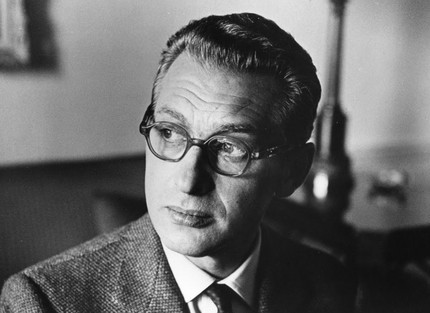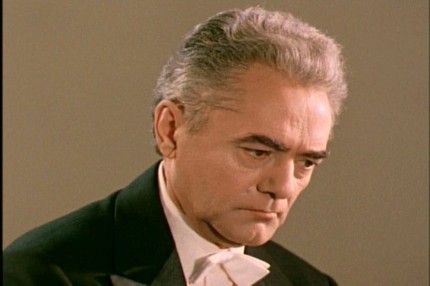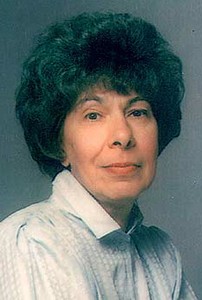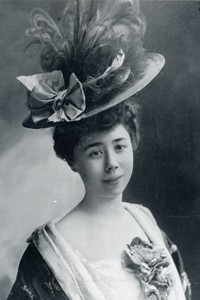
Géza Anda |
Geza Anda

Before Geza Anda took a strong position in the modern pianistic world, he went through a rather complicated, contradictory path of development. Both the creative image of the artist and the whole process of artistic formation seem to be very indicative for a whole generation of performing musicians, as if focusing both his indisputable merits and his characteristic weaknesses.
Anda grew up in a family of amateur musicians, at the age of 13 he entered the Liszt Academy of Music in Budapest, where among his teachers was the venerable E. Donany. He combined his studies with quite prosaic work: he gave piano lessons, earned his living by performing in variety orchestras, even in restaurants and dance parlors. Six years of study brought Anda not only a diploma, but also the Listov Prize, which gave her the right to make her debut in Budapest. He played, accompanied by an orchestra conducted by the famous V. Mengelberg, the Second Concerto of Brahms. The success was so great that a group of prominent musicians led by 3. Kodai obtained a scholarship for the talented artist, which allowed him to continue his studies in Berlin. And here he is lucky: the performance of Franck’s Symphonic Variations with the famous Philharmonics led by Mengelberg is highly appreciated by critics and connoisseurs. However, the oppressive atmosphere of the fascist capital was not to the liking of the artist, and having obtained a false medical certificate, he managed to leave for Switzerland (supposedly for treatment). Here Anda completed his education under the guidance of Edwin Fischer and settled, later, in 1954, receiving Swiss citizenship.
Numerous tours brought Anda European fame in the late 50s; in 1955, the audience of a number of US cities met him, in 1963 he first performed in Japan. All stages of the artist’s post-war activity are reflected on phonograph records, which allow one to judge his creative evolution. In his youth, Anda attracted attention primarily with his “manual” talent, and until the mid-50s, his repertoire had a distinct virtuoso bias. Few of his peers performed Brahms’ most difficult Variations on a Theme of Paganini or Liszt’s spectacular pieces with such bravura and confidence. But gradually Mozart becomes the center of the pianist’s creative interests. He repeatedly performs and records all of Mozart’s concertos (including 5 early ones), receiving many international awards for these recordings.
Starting from the mid-50s, following the example of his mentor E. Fischer, he often performed as a pianist-conductor, performing mainly Mozart concertos and achieving magnificent artistic results in this. Finally, for many of Mozart’s concertos, he wrote his own cadenzas, combining stylistic organicity with virtuoso brilliance and skill.
Interpreting Mozart, Anda always tried to convey to the audience what was closest to him in the work of this composer – the relief of the melody, the clarity and purity of the piano texture, the laid-back grace, the optimistic aspiration. The best confirmation of his achievements in this regard was not even the favorable reviews of reviewers, but the fact that Clara Haskil – the most subtle and most poetic artist – chose him as her partner for the performance of Mozart’s double concerto. But at the same time, Anda’s art for a long time lacked the trepidation of a living feeling, the depth of emotions, especially at moments of dramatic tensions and climaxes. He was not without reason reproached for cold virtuosity, unjustified acceleration of pace, mannerisms of phrasing, excessive prudence, designed to hide the lack of genuine content.
However, Anda’s Mozart recordings allow us to talk about the evolution of his art. The latest discs of the All Mozart Concertos series (with the orchestra of the Salzburg Mozarteum), completed by the artist on the threshold of his 50th birthday, are marked by a darker, massive sound, a desire for monumentality, philosophical depth, which is emphasized by the choice of more moderate than before , temp. This did not give any particular reason to see signs of fundamental changes in the artist’s pianistic style, but only reminded him that creative maturity inevitably leaves its mark.
So, Geza Anda earned a reputation as a pianist with a rather narrow creative profile – primarily a “specialist” in Mozart. He himself, however, categorically disputed such a verdict. “The term “specialist” doesn’t make sense,” Anda once told a correspondent for the Slovak magazine Good Life. – I started with Chopin and for many I was then a specialist in Chopin. Then I played Brahms and I was immediately dubbed “Bramsian”. So any labeling is stupid.”
These words have their own truth. Indeed, Geza Anda was a major artist, a mature artist who always, in any repertoire, had something to say to the public and knew how to say it. Recall that he was almost the first to play all three of Bartók’s piano concertos in one evening. He owns an excellent recording of these concertos, as well as Rhapsody for Piano and Orchestra (Op. 1), made in collaboration with conductor F. Fritchi. In recent years, Anda increasingly turned to Beethoven (whom he had hardly played before), to Schubert, Schumann, Brahms, Liszt. Among his recordings are both Brahms concertos (with Karajan), Grieg’s concerto, Beethoven’s Diabelli Waltz Variations, Fantasia in C major, Kreisleriana, Schumann’s Davidsbündler Dances.
But it is also true that it was in Mozart’s music that the best features of his pianism – crystal clear, polished, energetic – were revealed, perhaps, with the greatest completeness. Let’s say more, they were a kind of standard of what distinguishes a whole generation of Mozartian pianists.
Geza Anda’s influence on this generation is undeniable. It was determined not only by his game, but also by active pedagogical activity. Being an indispensable participant of the Salzburg festivals since 1951, he also conducted classes with young musicians in the city of Mozart; in 1960, shortly before his death, Edwin Fischer gave him his class in Lucerne, and later Anda taught interpretation every summer in Zurich. The artist formulated his pedagogical principles as follows: “Students play, I listen. Many pianists think with their fingers, but forget that music and technical development are one. The piano, like conducting, should open up new horizons.” Undoubtedly, the rich experience and breadth of outlook that came over the years allowed the artist to open these horizons in music to his students. We add that in recent years, Anda often performed as a conductor. An unexpected death did not allow his versatile talent to unfold in full. He died two weeks after triumphant concerts in Bratislava, the city where he made his debut with a symphony orchestra conducted by Ludovit Reiter several decades earlier.
Grigoriev L., Platek Ya.





